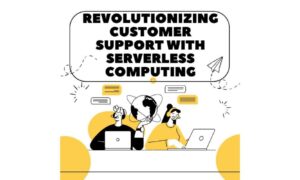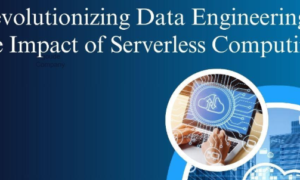Introduction:
In the ever-evolving landscape of cloud computing, a paradigm shift is underway, revolutionizing the way we design, deploy, and manage applications. Serverless computing has emerged as a groundbreaking approach, promising increased efficiency, scalability, and cost-effectiveness for developers and businesses alike. This article explores the transformative power of serverless computing, its key components, benefits, challenges, and its potential to reshape the future of cloud applications.
Understanding Serverless Computing:
Contrary to its name, serverless computing does not mean the absence of servers. Instead, it shifts the responsibility of server management from the developer to the cloud service provider. In a traditional cloud setup, developers need to manage and provision servers, ensuring they are appropriately sized to handle peak loads. In a serverless architecture, developers focus solely on writing code, as the cloud provider takes care of server provisioning, scaling, and maintenance.
Key Components of Serverless Computing:
- Functions-as-a-Service (FaaS): At the core of serverless computing is the concept of Functions-as-a-Service. Developers break down their application into smaller, independent functions. Each function performs a specific task and is triggered by a specific event, such as an HTTP request or changes in a database.
- Event-Driven Architecture: Serverless applications are event-driven, meaning they respond to events or triggers. These triggers can include HTTP requests, changes in data, file uploads, or even time-based events. The serverless platform automatically scales resources up or down based on demand, ensuring optimal performance and resource utilization.
- Statelessness: Serverless functions are designed to be stateless, meaning they don’t retain information between executions. Any required state is typically stored in a separate database or storage service. This allows for easy scalability, as functions can be executed independently and in parallel.
Benefits of Serverless Computing:
- Cost-Efficiency: One of the primary advantages of serverless computing is its pay-as-you-go pricing model. With traditional cloud setups, you often pay for reserved server capacity, regardless of whether it’s fully utilized. Serverless, on the other hand, charges based on the actual execution of functions, leading to significant cost savings, especially for applications with varying workloads.
- Scalability: Serverless architecture allows applications to scale automatically in response to increased demand. As each function operates independently, the system can efficiently distribute workloads, ensuring optimal performance during peak times and saving resources during periods of low activity.
- Faster Time-to-Market: Developers can focus solely on writing code, as the operational complexities of server management are abstracted away. This results in faster development cycles, shorter time-to-market, and increased agility for businesses.
- Reduced Operational Overhead: Serverless computing shifts operational responsibilities to the cloud provider. Tasks such as server provisioning, maintenance, and security updates are handled automatically, freeing up developers to concentrate on building features and improving application functionality.
Challenges and Considerations:
While serverless computing offers compelling benefits, it is not without its challenges:
- Cold Start Latency: Serverless functions experience a delay known as “cold start” when triggered for the first time or after a period of inactivity. This latency can impact real-time applications or those requiring near-instantaneous response times.
- Vendor Lock-in: Adopting a serverless architecture may lead to vendor lock-in, as each cloud provider has its own set of proprietary services and tools. Migrating serverless applications from one provider to another can be complex and time-consuming.
- Limited Execution Time: Serverless functions typically have a maximum execution time limit imposed by cloud providers. Long-running processes may need to be re-architected or handled differently.
The Future of Cloud Applications:
Serverless computing is increasingly becoming the go-to choice for developing and deploying cloud applications. As technology continues to advance, we can expect the following trends to shape the future of serverless computing:
- Edge Computing Integration: Serverless computing will extend its reach to edge locations, bringing computation closer to end-users. This integration will enhance the performance of applications that require low-latency responses.
- Hybrid Cloud Solutions: Organizations will adopt hybrid cloud architectures, combining serverless computing with traditional cloud and on-premises solutions. This approach provides flexibility and allows businesses to leverage the benefits of serverless computing where it makes the most sense.
- Enhanced Tooling and Monitoring: As serverless adoption grows, there will be an increased focus on developing comprehensive tooling and monitoring solutions. These tools will address challenges such as debugging, performance optimization, and security in a serverless environment.
- Standardization Efforts: Industry initiatives and standardization efforts will likely emerge to address the challenges of vendor lock-in. This will make it easier for businesses to switch between cloud providers or utilize a multi-cloud strategy without significant rework.
Conclusion:
Serverless computing represents a significant leap forward in the evolution of cloud applications. Its ability to simplify development, improve scalability, and reduce operational overhead makes it an attractive option for businesses of all sizes. While challenges exist, ongoing advancements and the maturation of the serverless ecosystem are addressing these concerns. As we look to the future, serverless computing seems poised to play a pivotal role in shaping the next generation of cloud applications, unlocking new possibilities for innovation and efficiency. Embracing this transformative technology today may well be the key to staying ahead in the ever-evolving landscape of cloud computing.



































